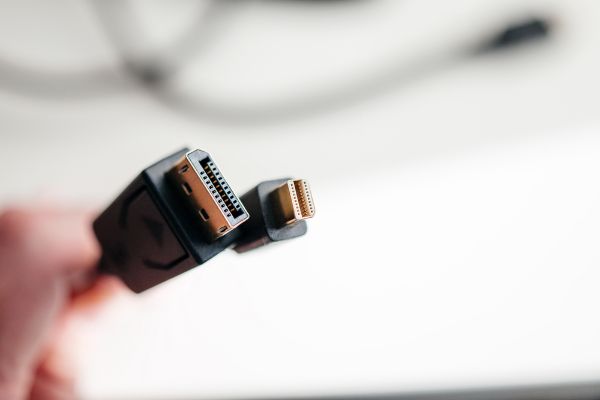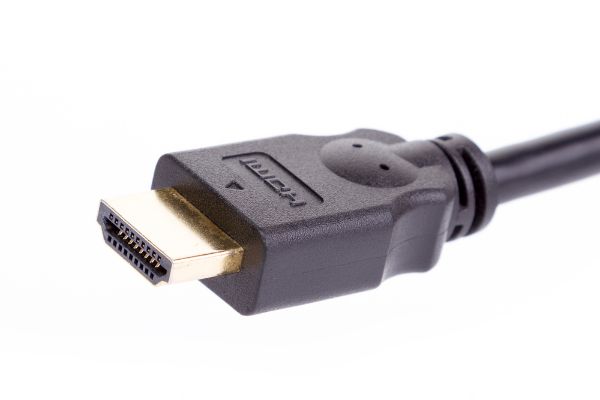Disclaimer: This post may contain affiliate links, meaning we get a small commission if you make a purchase through our links, at no cost to you. For more information, please visit our Disclaimer Page.
A simple display port is any socket on a device that you can connect via cable to a monitor. However, there is also something called the DisplayPort, which is more than a generic name. DisplayPort is a digital interface that different teams of chip developers and manufacturers created as a video standard.
This helped more devices have the capability to connect things in a way that was simple and easy to use across a whole range of products that consumers might buy. Additionally, DisplayPort is designed to be able to carry audio or USB data as well. If you’re familiar with the DVI or VGA interfaces, DisplayPort was meant to be a replacement for those.
Some consumers might have laptops that do not seem to feature an input for a DisplayPort at all, however. We can discuss why some of these devices don’t feature native ports like this, whether you can add them, and how your laptop’s operations might be affected by a lack of a DisplayPort. Additionally, we’ll touch on some workarounds you can use to make similar connections without using this port.
Table of Contents
Why Don’t Some Laptops Have a DisplayPort?
Many laptops will have either DisplayPort, often abbreviated as DP, or a version called mini-DisplayPort. You will see this one listed alongside the DP as mDP quite often.
However, not all such machines have DisplayPort. The reasons for this vary, and it can depend on the manufacturer, some of the specific models they produce, and their intent with said models.
Some laptops that do not have DisplayPort will have other standards meant for consumers to use in place of DP or mDP. This isn’t always the case, but your laptop should have at least one standard that you can use for most things you might use DisplayPort for.
First, a laptop may lack the DisplayPort simply as a matter of aesthetics. Even some high-end gaming laptops with a lot of features may not have a native DP. In these cases, the designer may not like how DisplayPort looks. While that may seem trivial, the inputs necessary to accommodate DP can seem quite large on a laptop.
Furthermore, that makes it hard to fit such a port in a laptop that has a smaller form factor, or it can be a problem that adds to the overall weight of a laptop. When both size and weight can affect portability, one of the main features of a laptop, it is possible that the manufacturer will look for other means to plug the devices into displays.
Second, many laptops without a DisplayPort will typically have another form for connecting to other displays. This format tends to be somewhat more typical or universal.
This helps make the machine as compatible as possible with many display peripherals it may come into contact with when you’re transporting it from one place to another. This also helps to make the laptop more versatile, and many of the display options you will come across should have at least one other standard that is designed to work with these devices.
Last, there may be a safety issue related to a lack of the DP or mDP on some laptops. Many other connectors are made in such a way that they’ll slide in and out of the port smoothly.
A DP connector usually has to hook into the port. It will still go in straight, but the way the connectors work means that they attach themselves to the interior of the port in a different way. Thus, if you forget that a cable is attached to most laptop ports, it will slide out with no damage most of the time.
The nature of the connectors for a DP means that there is a chance it could get caught. This might twist the pins on the connector or otherwise damage the parts inside the laptop’s port.
While it is always a good idea to disconnect all cables before moving a laptop, the way these ports are designed may lend to a bit more safety if you forget to unplug something.
Can You Add DisplayPort to a Laptop?
You can’t add DisplayPort itself to a laptop that lacks it already. This is because the nature of DisplayPort is built into the framework of any technology that uses it.
As we touched on, it is a relatively large port with connections, and it uses specific hardware to pair itself with monitors or other display devices that support it.
There are certain adapters or other accessories that you can purchase, and these things will mimic much of what DisplayPort is meant to do for you.
However, it won’t be quite the same as a native DP or mDP connection. Even so, most laptops that do not use DisplayPort will have similar options that can give you the setup you want.
What Do I Do if My Laptop Doesn’t Have DisplayPort?
You can do a few things, but we will focus on how you might mirror or access DisplayPort from a laptop that doesn’t have it. If this is the case for you, you might be able to find an adapter that provides you with DisplayPort connectivity via a connector.
One of the more common ones you could use for this purpose is a USB-C hub with suitable ports. In other cases, you may find that you can use an adapter that will change whatever the native connection is into one that supports DP.
Although you cannot add DisplayPort to the laptop itself, you might be able to attach an external graphics processing unit with a DP port to the device.
You may need a laptop with Thunderbolt 3 for this to work. Much like DisplayPort itself, Thunderbolt is a computer interface.
This interface is intended to work with various external peripherals, so a GPU that you can connect externally should be able to hook up to it. If you do get an adapter, make sure that the male and female connectors are the proper types you need for the support you want.
How Do I Connect a Monitor to My Laptop Without DisplayPort?
We talked about workarounds that could let you access DisplayPort features if you don’t have such a thing on your laptop. However, there are a couple of things you can do if you also don’t have an interface like Thunderbolt 3 or the ability to hook up your device to an external GPU with its own DP functionality.
The easiest thing to do in this situation is to go for a different port that supports display functions. When we talked earlier about the relative flexibility of laptops, part of that was in how many of them come with HDMI ports. What’s more, many devices you might want to connect your laptop to have the same ports that can receive an HDMI cable.
HDMI is another kind of interface, and it transmits both audio and visual data between two devices.
You may notice HDMI ports on the sides of your laptop, and there are usually corresponding ports on the backs of many kinds of modern televisions or other external monitors. You can use this interface as a substitute for DisplayPort to send data between this connection.
Even some camcorders and digital cameras will have ports for an HDMI hookup. If your laptop does not have DisplayPort, it probably has HDMI. This kind of port can give you the connectivity that you need.
Can You Use DisplayPort and HDMI at the Same Time?
Yes, it is possible to use both DisplayPort and HDMI simultaneously. However, if we’re thinking about this from the laptop side of things, you might not need to do so.
The only time you might need to use both at once is if you need to connect your laptop to more than one external display simultaneously.
If you need to hook it up to one monitor, there is little reason to mess with both. Additionally, if you’re going about this from the monitor side of things, you’ll still need to configure the monitor to only receive input from one or the other at a time.
Therefore, it is very possible, but it is not necessarily a feature you will need to use often.
Conclusion
DisplayPort is a great way to connect a laptop to certain external video devices. You might find DP or mDP technology in some monitors, large protectors, or even optical disc drives. However, not every laptop on the market has DisplayPort capabilities.
Furthermore, not all the modern devices you find will receive DisplayPort connections. While this might be frustrating, you can still find most computers that will have at least one alternative to DP. Further, there are ways to get DisplayPort functionality if you have the proper kind of laptop rig.


